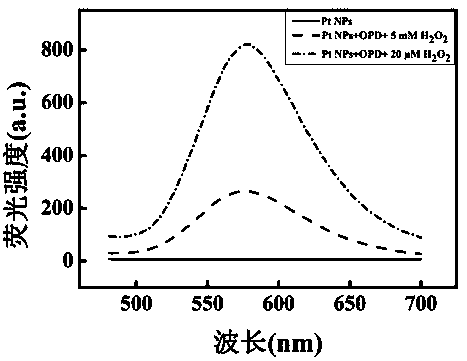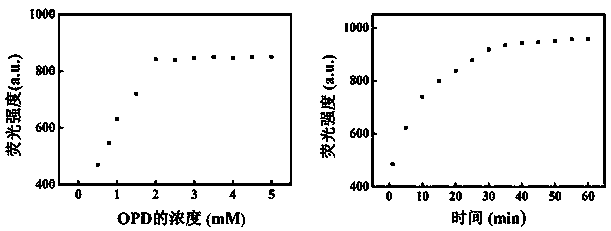Biosensor for detecting Hx(hypoxanthine) in aquatic products
A biosensor, hypoxanthine technology, applied in the field of food analysis, can solve the problems of complicated synthesis, complex sensor preparation, long detection period, etc., and achieve the effects of good selectivity, simple and fast preparation process, and low detection cost
- Summary
- Abstract
- Description
- Claims
- Application Information
AI Technical Summary
Problems solved by technology
Method used
Image
Examples
Embodiment 1
[0023] 1 mL of 16 mM chloroplatinic acid aqueous solution and 1 mL of 40 mM trisodium citrate solution were added to 38 mL of water and stirred at room temperature for 30 minutes. Then, add 200 μL of 50 mM sodium borohydride solution to the mixture. After standing still for 1 h, a brown suspension of Pt NPs was obtained, and the average particle size of the as-prepared Pt NPs was about 2.4 nm. All glassware used in the above process was soaked in aqua regia, rinsed thoroughly with ultrapure water, and air-dried.
[0024] figure 1 and figure 2 Shown is the verification of the feasibility of the sensor, Pt NPs alone have no fluorescence absorption peaks, when adding OPD and H 2 o 2 Then the solution has a fluorescence absorption peak at 580nm, and when H 2 o 2 When the concentration is high, the intensity of the absorption peak decreases. figure 2 In the solution, only when Hx and XOD are added at the same time, the fluorescence intensity of the solution will show a sig...
PUM
 Login to View More
Login to View More Abstract
Description
Claims
Application Information
 Login to View More
Login to View More - R&D
- Intellectual Property
- Life Sciences
- Materials
- Tech Scout
- Unparalleled Data Quality
- Higher Quality Content
- 60% Fewer Hallucinations
Browse by: Latest US Patents, China's latest patents, Technical Efficacy Thesaurus, Application Domain, Technology Topic, Popular Technical Reports.
© 2025 PatSnap. All rights reserved.Legal|Privacy policy|Modern Slavery Act Transparency Statement|Sitemap|About US| Contact US: help@patsnap.com



